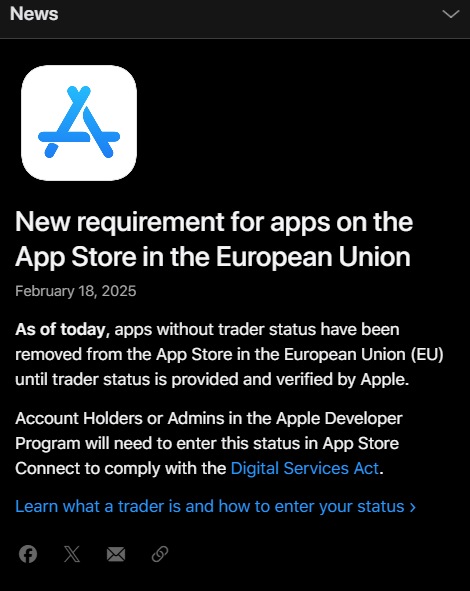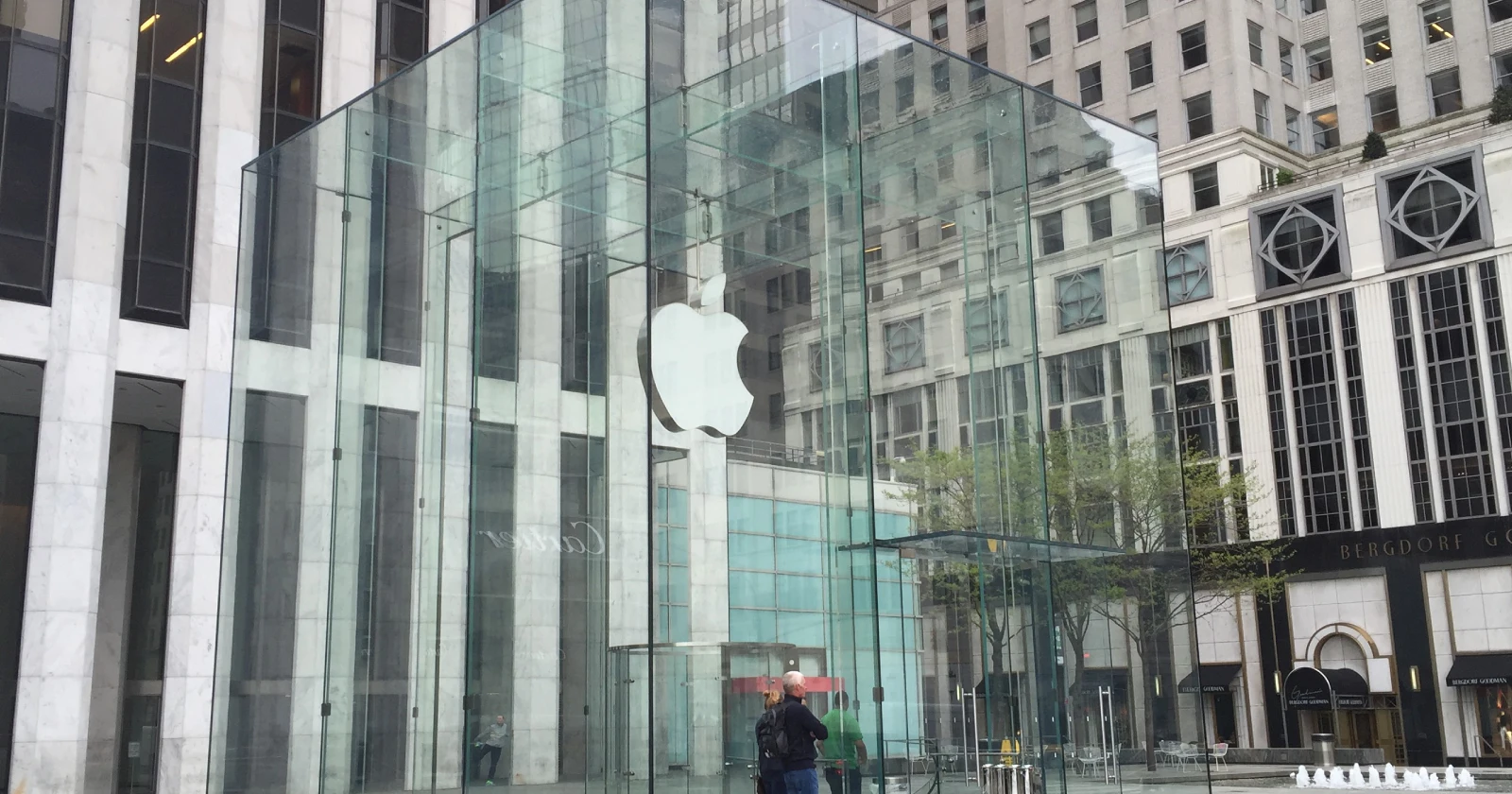Apple has taken a bold step by removing over 130,000 apps from its App Store in the European Union (EU) in the last two days. This mass removal comes as a direct response to the new Digital Services Act (DSA) requirements that went into effect on February 18, 2025.
The DSA mandates that all app developers provide their “trader status” to continue distributing apps in the EU. Apple has made it clear: apps without this status have been delisted. Developers must now update their App Store Connect with trader details to get their apps reinstated.

The new regulation requires developers to declare if they are traders under EU law. This involves providing contact information such as an address, phone number, and email for display on the App Store. This transparency aims to enhance consumer rights by making it easier for users to contact app providers.
The compliance stems from Articles 30 and 31 of the DSA, which demand that Apple verify and display trader information for all apps. This isn’t just about adding business details; it’s about ensuring that apps, especially those monetizing through in-app purchases or ads, are compliant with EU consumer protection laws.
For developers, especially smaller or indie ones, this has meant a scramble to comply. Many have had to use virtual addresses or phone numbers to maintain privacy while meeting the new requirements. This has been a significant shift for those who previously only shared an email for customer inquiries.
According to Appfigures (via TechCrunch), nearly 135,000 apps have gone inactive across EU App Stores in the last 48 hours. This has not only affected developers but also consumers who might find their favorite apps suddenly missing from the store.
The compliance process has been particularly challenging for developers who don’t engage in app development full-time. They now face the task of either becoming compliant or losing their EU market presence.

This move by Apple is part of a larger trend where tech giants are adjusting to tighter EU regulations. For instance, Google has tweaked its search results to align with similar EU rules, ensuring that businesses can be easily contacted by consumers. Additionally, Apple’s iOS 18 updates started reflecting EU regulatory changes last year, giving users more control over app management, which indirectly supports the new trader visibility requirements.
As developers adapt to these changes, the landscape of app distribution in the EU might shift, potentially fostering a more transparent and consumer-friendly digital marketplace. However, the immediate aftermath has seen a significant number of apps disappear, prompting a reevaluation of how developers operate within the EU’s regulatory framework.
Apple continues to direct developers to resources on how to comply, emphasizing the need for all to understand their status as traders under the new law. The coming weeks will reveal how this compliance overhaul reshapes the App Store ecosystem in Europe.
TechIssuesToday primarily focuses on publishing 'breaking' or 'exclusive' tech news. This means, we are usually the first news website on the whole Internet to highlight the topics we cover daily. So far, our stories have been picked up by many mainstream technology publications like The Verge, Macrumors, Forbes, etc. To know more, head here.


